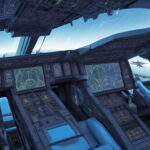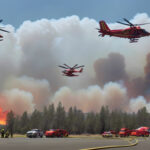Test Yourself on Science Fiction That Became Reality
By J. D. Biersdorfer | July 28, 2025 | The New York Times
Science fiction has long been a playground for imaginative futures, envisioning technologies and ideas that sometimes take decades to materialize. This week, The New York Times Book Review presents a special quiz featuring iconic science fiction works that anticipated inventions and concepts now part of our everyday lives. See how well you know these influential books and the groundbreaking ideas they predicted.
Welcome to Lit Trivia: Science Fiction Predictions Quiz
Explore five multiple-choice questions spotlighting novels and stories that foresaw current technological breakthroughs.
1. Isaac Asimov’s 1942 Short Story “Runaround”
Featured in his acclaimed 1950 collection I, Robot, “Runaround” introduced a concept that changed both literary science fiction and real-world robotics. What crucial idea emerged from this story?
- Cybernetic human-robot hybrids
- Voice-activated computers
- Behavior rules for robots
- Self-driving buses
Hint: This concept laid the groundwork for ethical programming in robotics.
2. The HAL 9000 Computer in Arthur C. Clarke’s 2001: A Space Odyssey (1968)
A familiar name to many, HAL 9000 is the advanced artificial intelligence controlling a spacecraft. What does the acronym “HAL” stand for?
- Helix Algorithm Loop
- Hexadecimal Array Launcher
- Halogen Android Localhost
- Heuristically Programmed Algorithmic Computer
Hint: HAL represents a pioneering idea in machine learning and AI.
3. Mary E. Bradley Lane’s 1890 Novel Mizora: A Prophecy
This lesser-known work depicted a self-sufficient, all-female utopia and introduced an early vision of a scientific advancement that resonates today. Which advancement was it?
- Space shuttles
- Artificial meat and dairy products
- Video conferencing
- Self-updating electronic newspapers
Hint: This idea relates to modern innovations in food technology.
4. William Gibson’s Neuromancer (1984) and Virtual Worlds Terminology
While Neuromancer popularized “cyberspace,” another novel coined the terms “Metaverse” and “avatar,” concepts now integral to gaming and online environments. Which book introduced these terms?
- Kill Decision by Daniel Suarez
- The City We Became by N. K. Jemisin
- Snow Crash by Neal Stephenson
- Darknet by Matthew Mather
Hint: This cyberpunk classic is often credited with shaping digital culture vocabulary.
5. Philip K. Dick’s Do Androids Dream of Electric Sheep? (1968) and Technology Branding
Philip K. Dick’s novel explored the blurred lines between humans and artificial life. Which modern tech company named a line of products “Nexus” after the humanoid cyborgs depicted in the book?
- Apple
- Microsoft
- Samsung
Hint: The Nexus brand is well-known in the smartphone industry.
Dive Into Science Fiction’s Visionary World
After answering, explore these groundbreaking books that not only entertained but also inspired future innovations. From Asimov’s robotic laws to Neal Stephenson’s digital realms, science fiction continues to challenge what is possible.
For more information, including links to the featured titles, visit The New York Times Book Review. Test your knowledge and discover how fiction often precedes reality.
© 2025 The New York Times Company
All rights reserved.









